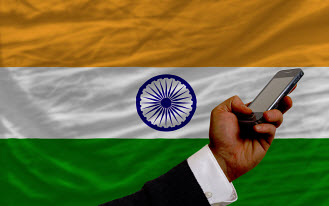This app has partnered with the State Bank of India in order to reach people without banking access in the country.
The Amdocs mobile wallet app has now entered into a partnership with the State Bank of India for the purpose of reaching the millions of people throughout the country who are unbanked, so that they can have access to digital banking capabilities.
The company has now officially announced its white label solution that targets the underbanked and unbanked populations.
Amdocs provides global customer experience solutions for the telecom industry. It announced that it will be bringing a mobile wallet to the unbanked and underbanked populations of the world. That said, it also made a second announcement, which was of a new partnership that it had opened up with Triotech, the State Bank of India, and Bharat Sanchar Nigram Ltd (the Indian telecom). It has offered its new solution with the intention to be able to reach about 75 million households within the country.
The mobile wallet gives users the ability to complete a range of different types of transaction.
 Users of the app are able to take part in a broad spectrum of mobile payments and banking capabilities. This includes paying their bills, applying for a microloan, making payments in-store through their debit and credit cards, as well as with prepaid cards.
Users of the app are able to take part in a broad spectrum of mobile payments and banking capabilities. This includes paying their bills, applying for a microloan, making payments in-store through their debit and credit cards, as well as with prepaid cards.
A significant move by Amdocs that made this new mobile payments and banking solution possible was its acquisition of Utiba, which took place earlier in 2014, and that had already launched its first m-commerce in 2004 in the Philippines.
It is pushing to take part of the massive potential presented by the tremendous unbanked population around the world which, according to the World Bank, is made up of 2.5 billion people. The Amdocs division president of emerging offerings, Patrick McGrory, explained that it is seeing a considerable opportunity to bring together the efforts of telecoms and banks in order to be able to serve that population, particularly as much of the unbanked population of the world also happens to be smartphone owners, making it a potentially perfect fit.
The Reserve Bank of India has released a report that indicated that they had expected faster uptake.
According to the most recent Financial Stability Report from the Reserve Bank of India, the uptake of Indian mobile payments and banking has been promising, and yet considerably slower than had been expected over the span of the last three years.
The only banks in the country that can offer services over smartphones and tablets are those that are licensed.
According to the Central Bank in the country, in order to be able to offer Indian mobile paymentshttp://www.mobilecommercepress.com/mobile-banking-rise-australia/853413/, the institutions that wish to provide them to consumers must not only have a license from the Reserve Bank of India, but it must also be supervised by that agency. At the time of the report, there were 78 banks – including a number of them that are regional rural banks, as well as urban co-ops – that had been given the necessary permissions for offering these services.
Many are continuing to see a massive amount of potential from Indian mobile payments.
The Financial Stability Report claimed that using smartphones and tablets for banking offers people in India the greatest opportunity for financial inclusion that has ever been available. The report explained that “Helped by the rapid spread of use of mobile telephony, the growth in mobile banking has been encouraging over last three years.”
That said, it also pointed out that the growth and the overall acceptance of using these smartphone based services as a “channel for accessing banking services” has been much lower than had been anticipated.
Aside from the low awareness and adoption levels, there are also challenges in the industry regarding more rapid growth include the fact that banks aren’t capable of connecting bank account numbers with cell phone numbers, and there is a lack of compatibility between the apps and the devices that people are actually using in the country. There is also a lack of partnerships and models for sharing revenue between network operators and the banks, themselves.
Finally, Indian mobile payments have also been held back by the challenges in obtaining a USSD (Unstructured Supplementary Service Data) channel that is in operation for the purpose.
 Users of the app are able to take part in a broad spectrum of mobile payments and banking capabilities. This includes paying their bills, applying for a microloan, making payments in-store through their debit and credit cards, as well as with prepaid cards.
Users of the app are able to take part in a broad spectrum of mobile payments and banking capabilities. This includes paying their bills, applying for a microloan, making payments in-store through their debit and credit cards, as well as with prepaid cards.

